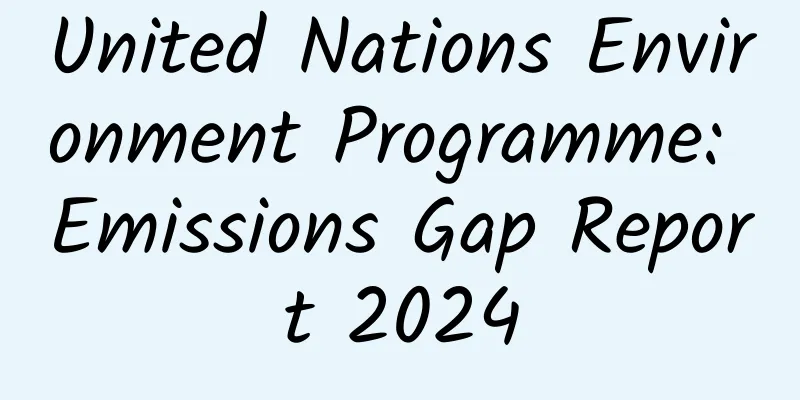United Nations Environment Programme: Emissions Gap Report 2024

|
UNEP has published its 2024 Emissions Gap Report, which looks at how much greenhouse gas cuts countries must commit to in the next round of Nationally Determined Contributions (NDCs), due in early 2025 ahead of COP30. To meet the 1.5°C target, emissions would need to be cut by 42% by 2030 and 57% by 2035. Without raising the ambition of these new NDCs and starting implementation now, the world is on track to warm by 2.6-3.1°C this century. This will have devastating impacts on people, the planet and economies. Achieving 1.5°C is still technically possible, with solar, wind and forests promising broad and rapid emissions reductions. Realizing this potential urgently requires support from a whole-of-government approach, measures to maximize socioeconomic and environmental co-benefits, enhanced international cooperation (including reforms to the global financial architecture), strong private sector action and at least a sixfold increase in mitigation investments. The G20 countries, especially the largest emitters, need to shoulder the heavy responsibility. Key findings
|
>>: Microsoft releases Xbox One S game console: starting price is $299
Recommend
A self-media blogger was almost blinded by the "atmosphere light"? Don't turn the light too bright!
Even video bloggers have become high-risk jobs. W...
A gentleman in a suit can also be sexy. Geely Borui will launch a GT model
Since its debut, Geely Borui has dominated the he...
Are the freshly cut vegetables sold in supermarkets made from other people’s leftovers?
For friends who need to cook, the most annoying t...
Where did humans come from? This "landing pioneer fish" gives a scientific answer to the question
"Where do humans come from?" This philo...
Queqiao-2: How does the “postman” on the Moon “chat” with the Earth?
Did you know that the Earth and the far side of t...
How was China's first castle in the air built?
Five Thousand Years of Chinese History We have bu...
Low-key Ganzi, Sichuan, contains such a unique color aesthetics
Ganzi, Sichuan A very humble name It encompasses ...
Are German cars more durable than Japanese cars? Media tested the Volkswagen Sagitar against the Corolla. Who lost again?
There is a saying among car enthusiasts that Germ...
How much is the investment price for Shennongjia Game Mini Program? Shennongjia game applet investment price inquiry
How much does it cost to attract investors for th...
Insight into 3 trends and understand 4 keywords to master new media marketing
In the eyes of many marketers , this is an era of...
There are many benefits to eating whole grains! Here are the top ten best grains for you!
Cereals are a general term for food crops mainly ...
iOS 9.2 released, 360 found 5 security vulnerabilities and was thanked
On December 9, Beijing time, Apple released the o...
[Girls' Emotions] Analyze 90% of emotional problems between the sexes and help you win the battle to defend your love
【Girls' Emotions】Analyzes 90% of emotional pr...
How do these Werewolf Killing APPs build channels and quickly acquire users?
In addition to short videos , Werewolf was also a...
Arsenic is crying, it is not the "heavy metal" of heavy metals
Often, when it comes to water pollution, environm...









